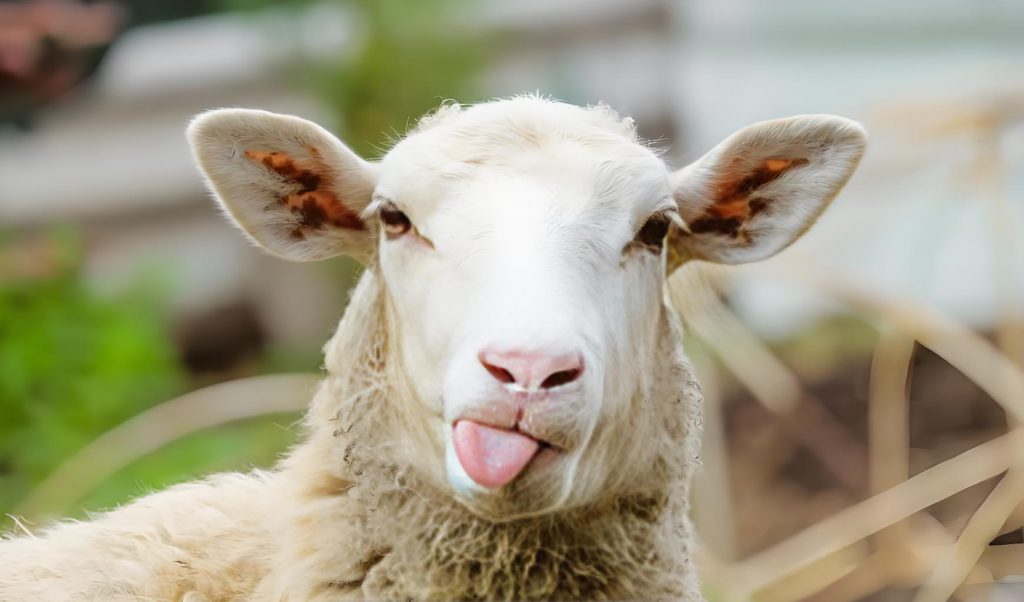Sheep are ruminants, but they rarely drink water, so their feces are dry and fine, and their excretion is also very small. Sheep manure urine is a thermal fertilizer between horse manure urine and cow manure urine. Sheep manure urine contains abundant nutrients, including effective nutrients that can be easily decomposed and absorbed by crops, as well as slow-release nutrients that are not easily decomposed. It is a good fertilizer that combines fast and slow fertilizer efficiency.
The organic matter content in sheep manure is 24% to 27%, the nitrogen content is 0.7% to 0.8%, the phosphorus content is 0.45% to 0.6%, and the potassium content is 0.3% to 0.6%. The organic matter content in sheep urine is 5%, the nitrogen content is 1.3% to 1.4%, the phosphorus content is very low, and the potassium content is very rich, up to 2.1% to 2.3%. The method of processing organic fertilizer includes steps such as collection, preparation, fermentation, etc. The basic process involves raw material pretreatment, fermentation process, and post-treatment after fermentation.

Collection: Collect fresh sheep manure from sheep pens or farms, and ensure that it does not contain impurities such as plastic, metal, etc.
Preparation: Choose a suitable site for fermentation, which should be well ventilated, flat, and easy to operate. In addition, prepare some auxiliary materials such as straw, sawdust, straw, etc. to increase the aeration and water retention during the fermentation process
Fermentation: Adjust its moisture content to 50% -60%, add specialized organic fertilizer fermentation agent, then mix it thoroughly with the auxiliary materials, stack it in piles, with a moderate height.
Cover: Cover the piled up sheep manure with a layer of plastic film or straw to maintain temperature and humidity.
Fermentation time: Environmental temperature, humidity, and material moisture content can all affect the fermentation time, which generally takes 2-3 weeks. During this period, it is necessary to regularly inspect and flip the stack of materials to ensure even fermentation.
Maturity stage: After a period of fermentation, sheep manure will gradually turn into black, loose, and organic fertilizer with a earthy smell. Determine whether fermentation is complete through observation and smell.
Attention: It is very important to maintain appropriate temperature and humidity during the fermentation process. At the same time, it is necessary to regularly flip the pile of materials to avoid soaking in rainwater and ensure that they are completely decomposed before use.
Usage: After processing, it can be used as base fertilizer or topdressing to improve soil fertility and crop yield.

Raw material preparation: In the initial stage of producing sheep manure organic fertilizer, it is necessary to mix it with an appropriate amount of straw powder to adjust its moisture content to a suitable level for fermentation. Generally, a moisture content of around 45% is required. When mixing, corn flour and strains can be added to increase the sugar content of bacterial fermentation, so that multi-dimensional complex enzyme bacteria can quickly gain advantages.
Aerobic fermentation: Aerobic fermentation is a very important step in the production of organic fertilizers. During this process, the prepared mixture is periodically flipped to promote air circulation and accelerate the fermentation process. This process is divided into several stages, including heating, deodorization, rosin, aroma conversion, and fertilization. Each stage has different characteristics, such as temperature rise, odor disappearance, and material drying.
Crushing and stirring: After aerobic fermentation treatment, it needs to be slightly dried and crushed using a semi wet material crusher. The crushed material should be fine and uniform to ensure the quality of subsequent granulation. Then, add the crushed material to the mixer for thorough mixing to ensure that the mixture is uniform and consistent.
Granulation molding: The uniformly mixed material is fed into an organic fertilizer granulator, and the material is granulated by the granulator. The generated particles can be spherical or other shapes, depending on the specific design and requirements of the granulator.
Drying and cooling: Granular particles need to be dried by a dryer before transportation and storage. The drying process is mainly to reduce the moisture content in the particles and prevent the fertilizer from clumping or spoiling during storage. Dry particles need to be cooled to enhance their strength and prepare for subsequent screening and packaging.
Screening and packaging: After cooling, the particles enter the screening machine for screening. Unqualified particles will be separated and sent back to the granulator for re granulation, while qualified particles will enter the next packaging process. During the packaging process, the particles are automatically or manually packaged into bags and stored in a dry and ventilated place to complete the entire production process.
If you have any further inquiries, please feel free to consult our company at any time.